Not everything that is deemed bad for you are actually bad in the same way as not everything that looks healthy are healthy.
[CustomTables]
What we put into our mouths ultimately dictates how our bodies will act and look like – the main reason why some people become gym buffs and health conscious individuals. With the help of today’s advanced technology, it is not hard to keep up with what we are eating. But how sure are we that what we’re eating would not harm us?
No matter how much we try to understand the complex nature of food, there are things that are just too hard to calculate nor control. Zero calories doesn’t necessarily mean “healthy” or “harm-free”, as these foods may still contain something that may harm the human system.
What exactly are these harmful ingredients in typical foods and what do they do to our bodies? We rounded up the ten most harmful ingredients found in your food. Always remember to avoid these ingredients at all costs.
10. Butylated Hydroxytoluene (BHT)
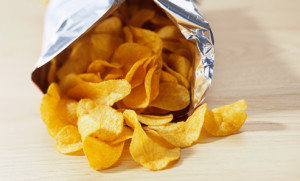
Potato chips, lard, butter, mashed potatoes, preserved meat, cereal, beer, baked goods, dry beverage, dessert mixes, chewing gum – these are just some of the many things people can’t resist. They’re good, and on top of that, they are cheap.
Bad news, however: they can be really harmful to for your body. Ingredients used to make these irresistible snacks are also found in petroleum products, rubber, and wax food packagings. Butylated Hydroxytoluene (BHT) can be seen in so many kinds of products because it’s a potent antioxidant. But how can an antioxidant be bad?
“ At low doses, BHT is safe ”
Fats and oils in food go through oxidation when exposed to air. This isn’t necessarily bad – in fact, oxidation makes oils and fats in food healthy. However, over time, the chemicals responsible for oxidation causes the bonds in fat to become weaker. Fats will the then start to smell foul and will inevitably become toxic.
However, it being toxic isn’t even the scariest part: research has shown that when these compounds are ingested at high doses, it can cause cancer in rats. It doesn’t affect humans in the exact same way (since these compounds only attack the forestomach, something we don’t have), this definitely must be considered as a red flag.
At low doses, BHT is safe. However, there are many food alternatives that don’t have BHT at all – consume those instead.
9. High Fructose Corn Syrup (HFCS)
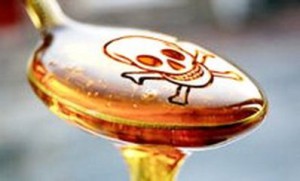
Harmless substances can become poisonous if taken in large quantities – and fructose corn syrup is not an exception. Some people go for HFCS instead of sugar since it’s sweeter and cheaper. An average soda contains 15 teaspoons of HFCS. Any sugar taken beyond this quantity is already toxic.
To make HFCS, the glucose and the fructose are separated. Glucose and fructose are naturally bound together, so floating fructose will look for something to cling to once it enters your body. Where does it go? Your liver’s walls. Once the fructose from HFCS finds home in your liver, it turns into a fat production factory – lipogenesis, as it is called. Lipogenesis leads to a fatty liver, which eventually causes pre-diabetes, as well as type 2 diabetes.
More so, chloralkali is an ingredient in creating high fructose corn syrup. Chloralkali, however, contains mercury, a known poison to the human body. Thus, alarming amounts of mercury is usually found in high dosages of HCFS.
There is no problem in taking HFCS at regulated levels, however, in United States only, the average teenager takes in about 34 teaspoons a day, while an average adult will ingest about 20 teaspoons a day. As it accumulates, it can pose a real health hazard to the body.
8. Tartrazine (Yellow #5)

Tartrazine is the synthetic food dye also called as Yellow #5. It’s found in a soda brand that most are familiar with today: Mountain Dew. During the 1900’s rumors spread that drinking Mountain Dew can make men ‘lose’ their genitals.
Also, Yellow #5 was said to be the cause of men’s shrinking sperm count. Back then, the rumours could not be supported by scientific evidence. However, even with the lack of evidence, people believed these rumours and couples solely relied on chugging down Mountain Dew as a mode of birth control.
In 1975, Ben Feingold, the chief allergist of Kaiser Permanente Medical Center in San Francisco attributed Yellow No. 5 for hyperactivity in some children. Further studies supported the claim: in 2007, a large-scale study showed that when Yellow #5 was mixed with other artificial colors, it increased hyperactivity in children.
Today, some countries require companies to place warning labels on food packages which contain tartrazine and other artificial food dyes. The safety of Yellow #5 is still up for debate.
7. Genetically Modified Soybean Oil
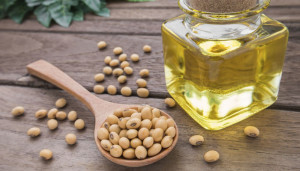
Soybean oil itself is not a healthy oil – trans fats found in soybean oil is harmful to the human body. In addition to that, most of the soy grown in the US are genetically engineered, adding more to its already various health hazards.
In recent years, tropical oils like coconut oil and palm oil became popular in the United States even if they are not endemic to the US. The US climate is not fit to produce such products. Despite these limitations, capitalism still found a way and created a localised version of tropical oils. As a result, domestically grown soybean oil came to American grocery shelves.
Soybean oil is rich with omega-6 fat, which we do need, as this oil is found in practically all meat. The omega-6 found in soybean oil can also be so saturated that it can cause chronic inflammation, and eventually, all kinds of chronic diseases.
6. Propylene Glycol Alginate (E405)
Propylene Glycol Alginate (E405) is commonly used as a thickening additive for particular kinds of food. It is mostly created from kelp, which is then processed and turned into a grainy chemical powder.
This powder is added onto foods that need to be thickened. Sometimes, it is also used as a preservative. Foods that usually contain Propylene Glycol Alginate are jellies, yogurt, jams, salad dressings, and ice cream. Some condiments may also include such ingredient
Generally, propylene glycol alginate as seen as a safe additive, however, some reports say otherwise. It has reported to cause nausea, rashes and irritations when used in cosmetic products, and even hair loss. It is still unclear if this is safe for expectant mothers because it is a form of teratogen which causes birth defects.
Aside from these things, propylene glycol alginate can also be easily absorbed by the skin, meaning that it can directly damage the kidneys and the liver. High doses may lead to seizures in children.
Despite these problems, propylene glycol alginate is still commonly used in a wide variety of everyday food.
5. Monosodium Glutamate (MSG)
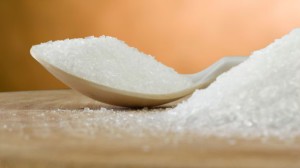
Monosodium Glutamate (MSG) has been scientifically proven to be dangerous. Typical complaints related to MSG include the burning sensation of the head, neck, and mouth, weakness of legs and arms, upset stomach, headaches, skin-related allergies.
Studies report that obesity is linked to too much intake of MSG. A study involving 752 healthy people, aged 40-59, showed that there was a positive correlation between the consumption of MSG and an increase in body mass.
Though MSG supercharges taste, it is also an excitotoxin to the brain. MSG creates a significant damage to it as it over stimulates the part of the brain that produces dopamine, creating a sensation of well-being. This also makes MSG addictive.
4. Sodium Benzoate

Sodium benzoate is produced when benzoic acid is combined with sodium hydroxide. Sodium Benzoate is a synthetic chemical, and benzoic acid is found in some fruits and spices.
The US Food and Drug Administration (FDA) and the Canadian Health Protection Branch has branded sodium benzoate as a generally safe product. This is why sodium benzoate is commonly found in everyday products like vinegar, sodas, fruit juices, salad dressings, wine, and pickles.
It can also be found in extremely low levels in apples, plums, berries, and cinnamon. Sodium benzoate is also found in shampoo, body lotions, deodorants to prevent bacteria from forming in these items.
“ Enhances hyperactivity in children ”
What brings sodium benzoate to this list, however, is its lab-syntehsized version: when these preservatives are put into metal cans, they can be detrimental to the human body. Some people experienced asthma attacks, hives, and other allergic reactions to sodium benzoate.
Sodium benzoate with citric acid and/or ascorbic acid (vitamin C) form benzene, a compound that causes cancer. It is also associated with leukemia and other blood cancers. Sodium benzoate is also linked to attention deficit/hyperactivity disorder (ADHD).
Experts note that this additive and other synthetic colouring products enhances hyperactivity in children. Another laboratory study notes the genotoxic impact of sodium benzoate in cultured human cells: the chemical damaged the DNA, triggering cell mutation, eventually causing cancer.
https://www.youtube.com/watch?v=DI19F-r8pbE
3. Carrageenan
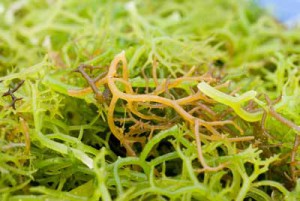
Going natural has recently become the lifestyle choice of many consumers, especially the younger ones. However, sometimes, eating too much natural products can be bad for your health. Carrageenan is added to foods like soymilk, chocolate, yogurt, and ice cream to give them a thicker consistency and make low-fat food tastier.
Carrageenan is made from red seaweed and is often added to beverages to keep their ingredients together. It is also often found in milk products, milk replacements, and nutritional shakes. Carrageenan is so common that it can also be found in frozen dinners, soups, and other commercial broth products. If carrageenan is this widely used, what is the problem with it? Carrageenan causes gut irritation, inflammation, and, the worst, cancer.
Carrageenan does its job in making food thicker, however, it does not pose any nutritional value. A nationwide petition urging the ban of carrageenan was already delivered to the FDA. It is also specifically damaging to the digestive system, starting with the same immune response the body does when invaded by salmonella.
The inflammation caused by carrageenan also leads to ulcerations and bleeding. The ingredient irritates by starting an immune system response that leads to inflammation. Studies have also linked carrageenan and gastrointestinal cancer in animals. The National Institutes of Health is currently investigating the effects of carrageenan on ulcerative colitis and diabetes.
2. Sodium Nitrate
Sodium nitrate is found in the most common of food. What’s bad about sodium nitrate is it’s found in widely available and easily bought products, such as cured meats like hot dogs and bacon? In higher doses, sodium nitrate kills rodents. Also, fumigates are sucked by the soil, contaminating most food supplies.
Sodium nitrate is used to keep food from spoiling, thus its presence in cured meat. It also protects food from harmful bacteria that can cause contamination and spoilage. However, sodium nitrate at high levels can cause blue baby syndrome, a fatal condition for infants. Sodium nitrate also attaches to red blood cells and blocks the the body from carrying oxygen.
This is not the end of the dangers sodium nitrate poses to the human body, however. Sodium nitrate increases the risk of cancer, as proven by the Linus Pauling Institute. They have observed that sodium nitrate at high levels are linked to an increase of the possibility of someone getting leukemia, brain tumors, and nose and throat tumors.
The FDA only allows a maximum amount of 2.75 ounces of sodium nitrate for 100 pounds of chopped meat. No scientific data is provided regarding the amounts of sodium nitrate safe to eat.
https://www.youtube.com/watch?v=a1NrxoATegw
1. Partially Hydrogenated Oil

Hydrogenated oil is a non-natural food substance that is used mainly for its ‘technical advantages’. Aside from that, this oil is also cheap. Amidst these, it has always been known that hydrogenated oil is health damaging.
Hydrogenated oil is also known as trans fat. They are vegetable oils with altered chemical structures – structure made to prevent rancidity in food, thus prolonging its shelf life. For manufacturers, this is a cost efficient move. Trans fat harms the body in many different ways: one, they add bad cholesterol to the body – low-density lipoprotein – and decreases good cholesterol – high-density lipoprotein; two, they block the creation of chemicals that stop inflammation.
Even small amounts of trans fat can damage the body. Overuse can result to chronic illnesses or even premature death.
https://www.youtube.com/watch?v=oE7oZMxda18
